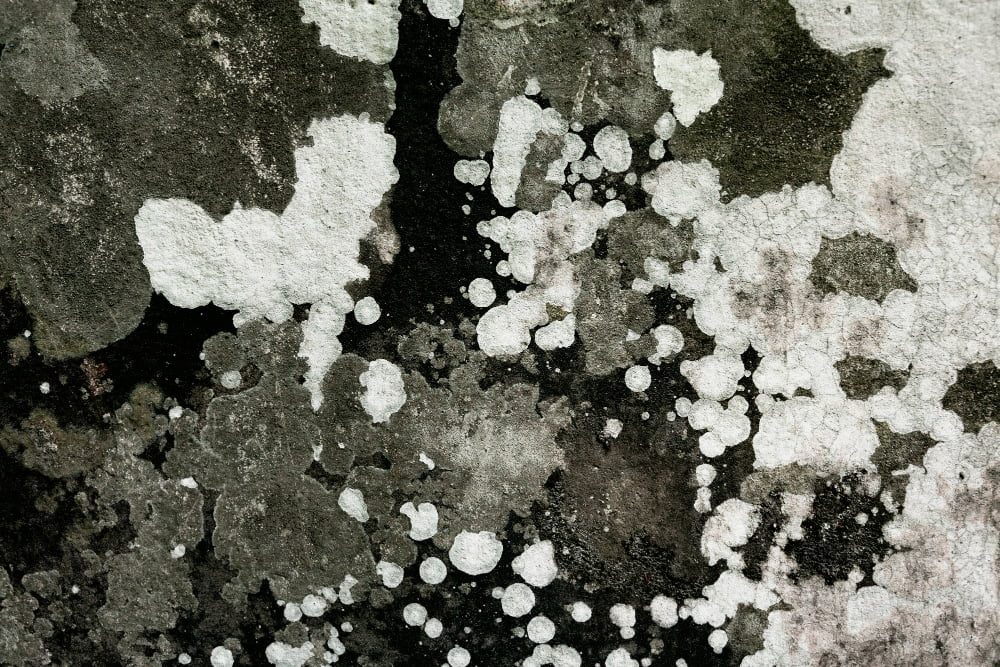Have you ever noticed strange dark spots on your concrete surfaces? It might make you wonder if black mold can actually grow on concrete. Mold is notorious for thriving in damp, organic environments, but many don’t realize that even materials like concrete aren’t immune.
So, can black mold grow on concrete? In this article, we’ll explore what black mold is, whether it can grow on concrete, and the steps you can take to prevent and remove it. By understanding the risks and proper prevention techniques, you can protect your home and ensure a safer living environment.
Table of Contents:
- What is Black Mold?
- Common Types of Mold
- Can Black Mold Really Grow on Concrete?
- Conditions Required for Mold Growth
- How to Identify Black Mold on Concrete
- Preventing Black Mold on Concrete
- Conclusion
What is Black Mold?
Black mold, scientifically known as Stachybotrys chartarum, is a toxic fungus that thrives in moist, damp environments. It is often dark green or black in color and can release spores that may cause health issues when inhaled, particularly for those with allergies, asthma, or compromised immune systems.
Black mold is notorious for growing on organic materials like wood and drywall, but it can also spread to less obvious surfaces, such as concrete, if the conditions are right. Identifying and addressing black mold early is crucial to minimizing its harmful effects.
Common Types of Mold
While black mold (Stachybotrys chartarum) is perhaps the most notorious, it’s not the only mold that can pose a threat in your home. Other common types include:
Aspergillus
This mold can appear in various colors, including green, yellow, brown, or black. It often grows on damp surfaces like insulation, wallpaper, and fabrics. While less toxic than black mold, it can still cause respiratory issues and allergic reactions.
Cladosporium
Typically found in basements, bathrooms, and HVAC systems, Cladosporium appears as olive-green or black spots. It can cause allergic reactions, sinus infections, and respiratory problems.
Penicillium
Known for its role in antibiotic production, Penicillium is often blue or green and grows on water-damaged materials. While Penicillium mold isn’t as hazardous as black mold, it can still cause allergic reactions and respiratory issues.
Alternaria
This mold is commonly found in damp areas like showers and bathtubs. It can appear in black, brown, or dark green colors and trigger allergies and asthma attacks.
Can Black Mold Really Grow on Concrete?
While concrete may seem resistant to mold due to its inorganic nature, it can indeed be a breeding ground under the right conditions. Concrete’s porous structure allows it to absorb and retain moisture, creating a hospitable environment for mold spores to flourish. Additionally, dust, dirt, and organic matter that accumulate on concrete surfaces provide nutrients for mold growth. This is particularly true in areas exposed to water leaks, high humidity, or frequent moisture.
Conditions Required for Mold Growth
For black mold to thrive on concrete, several key factors must align. These include:
- Moisture: Concrete’s porous nature allows it to absorb moisture from leaks, floods, or condensation. This damp environment is ideal for mold growth.
- Humidity: High humidity levels, especially above 50%, create favorable conditions for mold. Basements and garages are often susceptible due to poor ventilation.
- Lack of Sunlight: Mold prefers dark, poorly lit areas. Basements and crawl spaces, often dimly lit, provide ideal conditions for growth.
- Poor Air Circulation: Stagnant air traps moisture, promoting mold growth. Closed-off areas like basements and corners of rooms can become breeding grounds.
- Organic Matter: While concrete itself doesn’t provide nutrients, dust, dirt, and organic debris can act as food sources for mold. Regular cleaning helps prevent accumulation.
By addressing these factors, you can significantly reduce the risk of black mold growth on concrete surfaces.
How to Identify Black Mold on Concrete
Identifying mold on concrete isn’t always easy, but there are a few key signs to look out for.
| Sign | Description |
| Visible Spots | Dark green or black patches on the concrete surface. |
| Musty Odor | A strong, unpleasant smell associated with mold growth. |
| Moisture Patches | Dampness or visible moisture on the concrete. |
Preventing Black Mold on Concrete
Preventing black mold on concrete surfaces is crucial to avoid the health risks and damage mold can cause. To prevent black mold on concrete surfaces, focus on these key measures:
Proper Ventilation
Ensure that areas with concrete floors or walls, such as basements and garages, have good ventilation. Adequate airflow helps dry out damp spots and reduces moisture buildup. Installing fans, opening windows, or using ventilation systems can keep the air moving, preventing mold-friendly conditions.
Humidity Control
High humidity levels encourage mold growth. To combat this, use a dehumidifier, especially in areas prone to mold, like basements or bathrooms. Keeping humidity levels below 50% makes it harder for mold to thrive.
Sealing and Repair
Water can seep into cracks in concrete, providing a moist environment for mold. Repair any cracks in your concrete floors or walls, and fix any leaks promptly. Additionally, applying a waterproof sealant can further prevent moisture penetration.
Conclusion
While concrete might not seem like a typical surface for black mold growth, its porous nature and ability to retain moisture make it vulnerable under the right conditions. By understanding the factors that contribute to mold growth and taking preventive measures, you can protect your concrete surfaces and avoid the health risks associated with black mold. Regular cleaning, humidity control, and proper ventilation are essential steps to safeguard your property.
If you’re concerned about mold on your concrete surfaces or want professional advice on prevention and removal, contact the experts at Ener-Spray. Our team can provide customized solutions to keep your home safe and mold-free.
